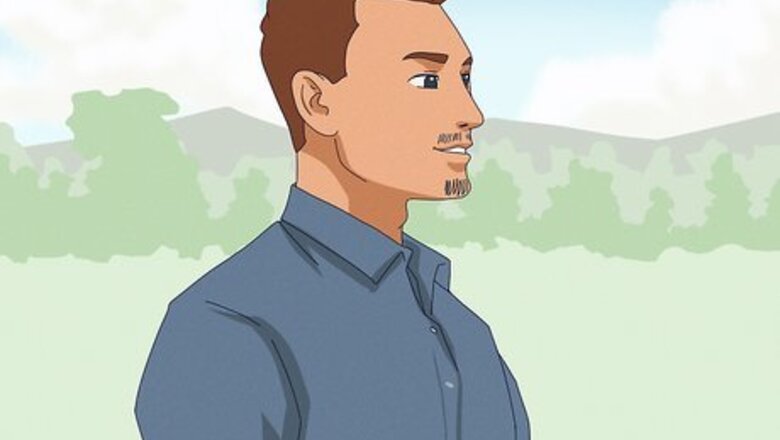
views
X
Expert Source
Jessica RudeEquine Expert
Expert Interview. 18 September 2020.
If your horse gets spooked and you want to calm him or her down in a hurry, follow these steps.
Staying Relaxed

Maintain a relaxed state of mind and body. Strive to stay relaxed before and during the ride. This can be achieved by breathing slowly and deeply to maintain a steady heartbeat. You might also try to keep a positive attitude in general, which could include soothing the horse by talking or singing softly to it before riding.

Pet the horse before and while riding. Petting a horse before riding as well as during the ride can help keep both horse and rider calm. Petting during the ride has the added bonus of helping keep the rider's hands steady, allowing for greater control of the horse. This control can help calm the animal more quickly in the event of spooking. A good place to pet the horse is on its withers, which is at the tip of the shoulders where the neck and back meet. Simply stroke the fur softly to pet. You can also apply soft pressure with your fingertips or scratch lightly with fingernails.

Use a tempo application. One way to help keep both the horse and rider calm during the ride—thereby minimizing spooking—is to use an application that sets a riding tempo. Acting like a metronome for the ride, the application will set a tempo for each gait, which the rider can speed up or slow down. The rider simply activates the application on a smartphone or mobile device and places it in their pocket during the ride with the volume up loud enough for the horse to hear it. Another way to use this application is to have a friend operate the tempo adjustments with the application hooked into a riding arena's public address system. This is a good way to ensure the horse can hear the beat.
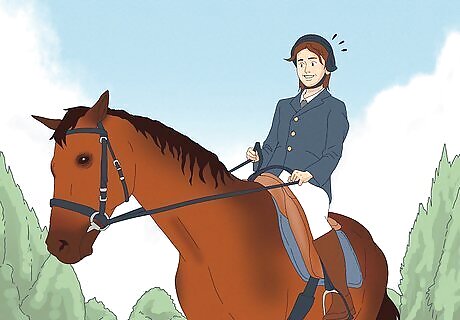
Do not show fear or stress. You may be startled by your horse's behavior if it gets spooked, but the horse will only experience greater stress if you show stress yourself. This is because your stress indicates to the horse that there is a legitimate threat, even though it is his or her stress to which you may be reacting. In this case, the horse can be more difficult to calm, so you really should remain calm if your horse gets spooked so as to minimize the horse's stress. You can generally tell if your horse is stressed if their ears are pinned back toward their butt.
Controlling Your Horse's Attention
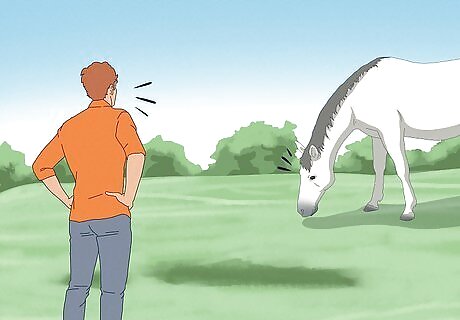
Get the horse's attention. Horses are generally only able to concentrate on one thing at a time, and the object on which they will likely focus when spooked is whatever has them spooked. If you can get the horse's attention away from this object, you will be better able to calm him or her quickly. You may even need to ride a horse in circles to get its attention off of whatever has it spooked. Horses can spook at pretty much anything, be it something in the environment, an unfamiliar object, or really anything. If the horse tenses up, flares its nostrils, widens its eyes, or points its ears back, it's frightened or stressed by something nearby.
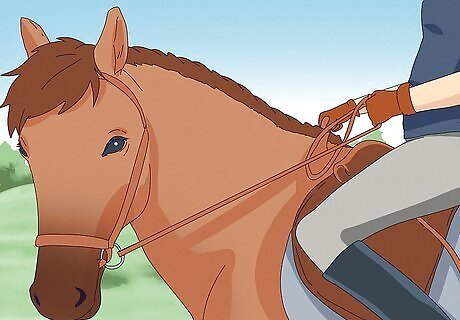
Use lateral flexion. Lateral flexion is a neutral rein position in which you gently pull on one rein to turn the horse's head. This technique helps the horse slow down before stopping, which will help keep the horse from running when it gets spooked—in effect, lateral flexion can help distract the horse from it's own spooked reaction to a stressor. Lateral flexion is sometimes called a relaxation cue, hence its effectiveness in helping to quickly calm a horse. Lift the reins to feel the horse's mouth through them using one hand, then move your other hand down the rein. Reach until the arm is straight and touching the horse's mane. Place the opposite hand on the horse's neck firmly to keep yourself stable, and begin to close your fingers slowly from the pointer to the pinky, locking the pinky when you finish. The horse should now start to bend to the pressure of the rein, at which point you can begin to move your arm down to your thigh near your knee. The horse should bend at this point until there is slack in the rein and stop. If the horse doesn't stop at this point, push firmly with your stabilizing hand and wait. Release pressure when the feet have stopped.
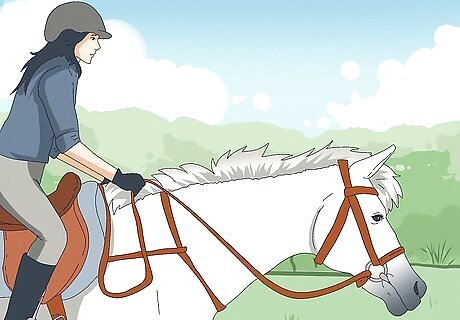
Continue to ride without acknowledgement of spooking. If the horse gets spooked, you can also try simply continuing your ride as though the horse had not been spooked at all. If you have tasks in mind, try to get the horse to focus on those as a distraction. Tasks include training for jumping courses, dressage tests, and more.
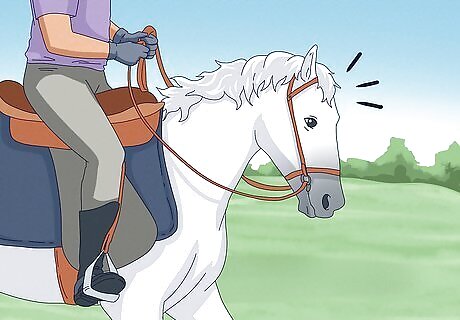
Point the horse toward the stressor. If you point the horse's nose at whatever is scaring it, but allow it to drift sideways or move backward, you will keep him or her from being able to run away in a panic because it would mean the horse would have to run toward the stressor. If the horse moves backward or sideways, you will direct its attention in a way that keeps the rider more safe. In order to keep from spooking the horse using this technique, be sure not to push him or her toward the stressor.
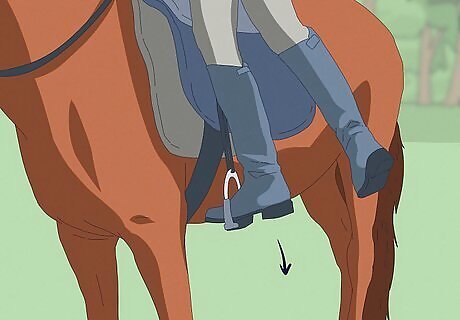
Get off the horse. For your safety, first and foremost, you may need to get off the horse, and doing so can help put you in a better position to calm the animal. If you do get off the horse, one way to help calm him or her is to simply act as if nothing happened. It is not recommended to always get off your horse when it is spooked because it can be dangerous to abandon the animal. It can also train the horse that you will get off if it acts in a particular way, which is not what you want, so only get off under these circumstances if absolutely necessary. You might also try to pet the horse on the withers as above to help calm it.
Why does my horse get spooked?
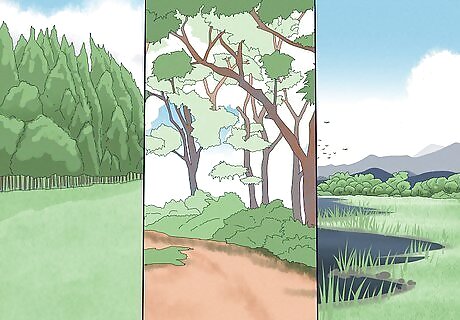
Environmental changesYour horse could get spooked if there is a change in their environment. Walking the same trail at a different time of day, for instance, could change the environment for your horse enough that he or she may be more prone to spooking. These kinds of changes in the environment must be considered in order to minimize the possibility that the horse may become spooked to begin with.
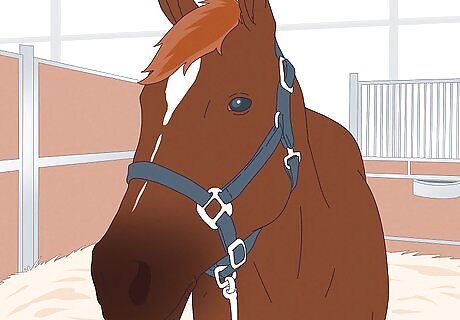
ConfinementHorses that are confined for long periods such as over the winter may have pent up energy that causes them to react more dramatically to unfamiliar sights or sounds. Even horses that are stalled much of the time may get spooked by their surroundings, which is why turning a horse out to pasture daily is a good idea. After a long winter's confinement, running in a pasture can help get the horse ready for riding with a minimum of spook behavior.
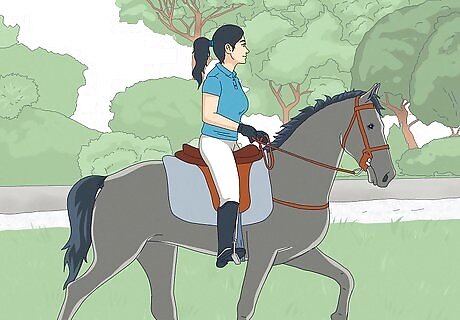
The rider's experience levelAn experienced rider can help lead a horse in a way that minimizes spooking, but an inexperienced rider may react in such a way as to increase the likelihood of spooking. Horses respond to the nervousness of their rider with their own nervousness, and the posture of a scared rider can be interpreted by the horse as encouragement to speed up. For these reasons, the experience of both the horse and rider is important to minimizing spooking.
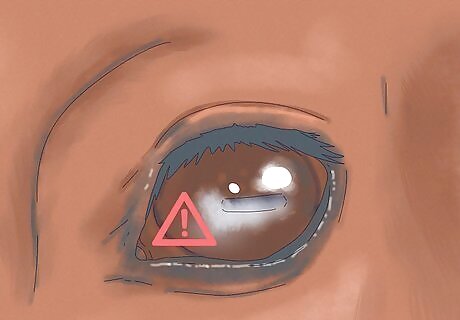
Impaired visionOne reason a horse may spook is impaired vision. This is often considered to be the most common reason a horse is more prone to spooking. An examination by a veterinarian is a good way to help ensure your horse will not spook due to vision problems.
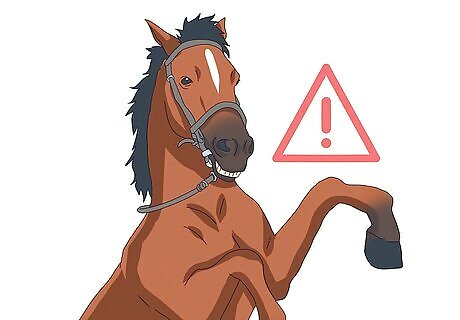
DiscomfortA horse that is uncomfortable is more prone to spooking. If the horse is in pain due to something as serious as a medical condition or something as simple as improper saddle fit, the problem must be corrected to help minimize spooking. Some other problems that might cause pain and spooking include the fitting or type of bit used, sharp teeth edges, or objects stuck in the bottom of one or more of the horse's hooves.


















Comments
0 comment